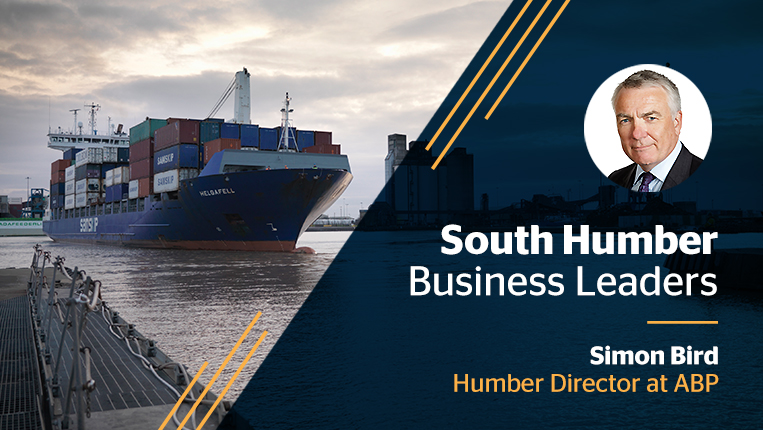Managing the UK’s Biggest Ports Complex: An Interview with Simon Bird, Humber Director at ABP
3:15 pm, Friday, 1st March 2019 - 5 years ago

As ABP’s Humber Director, Simon Bird is responsible for the UK’s biggest ports cluster, including the ports of Grimsby, Immingham, Greenport Hull and Goole. Simon is a keen ambassador for the area, and explains the importance of the Humber ports to South Humber-based businesses.
What is the scale of Associated British Ports’ operations in the Humber?
The Humber is the busiest estuary in the UK and, whichever way you look at it – by value, economic benefit or tonnage – the Humber ports are very significant. 13% of the UK’s trade takes place through them.
Associated British Ports is just coming to the end of a £400 million investment programme in the Humber region. This included the general updating of port facilities and infrastructure at all of the ports as well as the major Greenport Hull and the new Immingham Renewables Terminal.
How are Associated British Ports Services at Grimsby and Immingham complemented by services in the wider Humber ports complex?
The Humber Ports work together as integral parts of the wider organisation. They move cargo in agreement with shipping and cargo owners through the best port. Each has its own advantage – for example Grimsby is right at the mouth of the estuary, Immingham is 8 miles further up but has very deep water, Goole is shallower but with the advantage of being further inland with direct access to the M62. This means that the ports co-operate to deal with anything that is asked of them, and the process is seamless for shipping and cargo owners.
What gives South Humber the edge over alternative UK locations for expanding industrial and logistics companies?
The Humber Ports meet the needs of northern industry and connect the wider population of the UK to the rest of the world. For companies located in the area, proximity to the biggest ports cluster in the UK, together with fantastic road and rail infrastructure, is a huge benefit.
The ports offer regular services between the UK and mainland Europe. Services out of Grimsby and Immingham include 11 container lines to Rotterdam, Antwerp, Amsterdam and Zeebrugge, and 30 Ro-Ro sailings run by DFDS out of Immingham.
What ‘on-port’ property solutions does Associated British Ports offer to expanding companies?
We are big land owners with plenty of capacity. Portside facilities are available to companies to import products, process, re-export and move goods inland. We are very well placed to handle big ships and project cargo as well as food products, materials and components for manufacturing industry and bulk cargos.
As well as being home to general and food manufacturing sector companies, Grimsby is a centre of excellence for offshore wind, and its location on the edge of the estuary is perfect for serving the new wind farm locations off the East Coast. It is an excellent location for any company needing access to world markets and also for companies setting up or expanding in the growing offshore wind industry sector.
What, in your view, does the future hold for the development of South Humber as an industrial, ports and logistics business location?
Companies locate and grow their businesses here because of the port infrastructure. The massive investment ABP has just made in the area ensures that the ports have the facilities and capacity to serve growth in the region into the future. We have spare infrastructure capacity to accommodate growth.
MACE have recently published a report exploring the potential of the UK developing Supercharged Freeports. If this were to go ahead, Immingham and Grimsby, along with the other Humber ports, would be a vital part of that vision. We already connect northern industry with European ports and we are well placed to meet this and other possible challenges ahead.